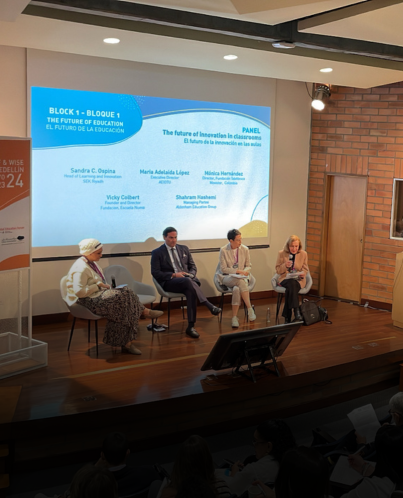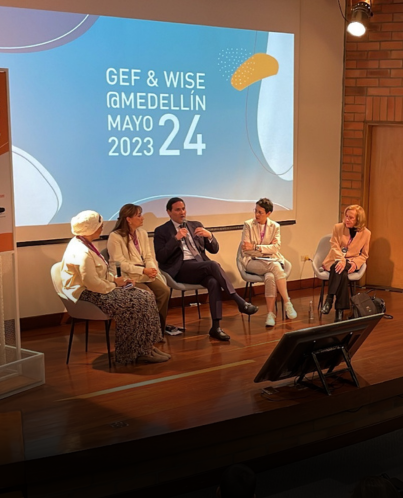Can Too Much Screen Time Affect Students?
From watching Netflix or YouTube and playing games to talking to friends and learning online, much of children’s lives revolve around screens. Students’ screen time is on the rise around the world, and parents and teachers alike are worried about the effect that screens could have on children’s education. But is it always such a bad thing?
The rise in screen time
Last year, a study published in JAMA Pediatrics found that the average amount of time children spent staring at screens during the pandemic had risen by 52%. Whereas the average child had an approximate screen time of 162 minutes a day, during the pandemic that number had risen to 246 minutes. During the pandemic, our schools were required to move online, which posed challenges, but we were still able to offer our students the high-quality education they’d come to expect. We weren’t only teaching online, but organising competitions and running virtual field trips. These days, with the Covid-19 pandemic largely behind us, that figure will likely fall. However, since technology is now an integral part of all of our lives, screens have gone on to become a daily companion for students.
The benefits of students’ screen time
When you ask yourself if too much time in front of a device or screen is a bad thing for children, the only real answer is that it’s complicated. While excessive usage of screens could have a negative impact, how children are using them can determine how much of an impact they can have – after all, not all screen time is created equal. In a 2019 study, Australian researchers identified five different categories of how we can interact with screens – social, passive, interactive, educational, and other. Passive screen use, such as watching TV or scrolling through social media, can be detrimental to a child’s development – it can affect their creativity and lead to social development problems, making it difficult for them to interact with their peers.
On the other hand, active screen time – such as educational programs and interactive learning – can be far more beneficial to students than passively consuming content. This can provide numerous benefits for students – interactive screens can be more engaging, helping students to retain information better and understand their material. Technology like screens can also encourage collaboration among students, through online discussions and shared documents, which can develop teamwork and communication skills. Screens and technology can provide students with access to a wealth of resources that they may not have otherwise, including online libraries, virtual museums, and educational videos. In a world that’s becoming increasingly reliant on technology, students using screens for educational purposes are able to develop important digital skills that will be valuable in their future careers. We take a forward-thinking approach at Aldenham Education Group, in order to prepare our students as best as we can for life after school.
How technology can be used in schools
One of the key benefits of technology and screens in education is their interactivity, which can help make students more engaged. For example, interactive screens in classrooms can be used to create an immersive learning experience that encourages participation and collaboration. By working together on projects, students can share ideas and receive immediate feedback, all of which can enhance the learning process. At our network of Aldenham schools, we always use cutting-edge technology, including interactive screens in classrooms. Our latest school, Aldenham Prep Riyadh, is also home to a Learning Resource Centre, where students can make use of computers and a 3D printer – we always embrace modern technology, especially when it can enhance the learning of our pupils. In ICT lessons, meanwhile, students work together on projects, teaming up and even sharing devices, to ensure they’re not in their own world, glued to a screen. When it comes to learning, there isn’t a one-size-fits-all approach, and we encourage our students to collaborate and communicate.
It is crucial, however, to ensure screens are always used responsibly, both at home and at school. It’s important for parents and teachers alike to set boundaries and establish rules around students’ screen time, in order to ensure that children aren’t spending too much time in front of them. Additionally, providing students with access to a balanced mix of activities, such as outdoor play, creative pursuits, and social interaction, can help mitigate the potentially negative effects of spending too much time in the virtual world. All of our schools offer students a range of extracurricular activities, from sports to the performing arts. We have a strong sporting tradition at our schools, and our students take part in sailing, golf, football, cricket, and more. When it comes to the performing arts, meanwhile, students can take to the stage or help out behind the scenes, and make use of a purpose-built theatre. All of these activities help students to get away from screens and work and play with others.
Too much of anything can be a bad thing. While there are benefits to students using screens, and they can be a valuable tool, it’s important to ensure screens are used in a responsible and productive way. At all of Aldenham Education Group’s schools, we work hard to find the right balance that benefits our pupils’ development – find out how we add value to our pupils’ education through our all-round education.


